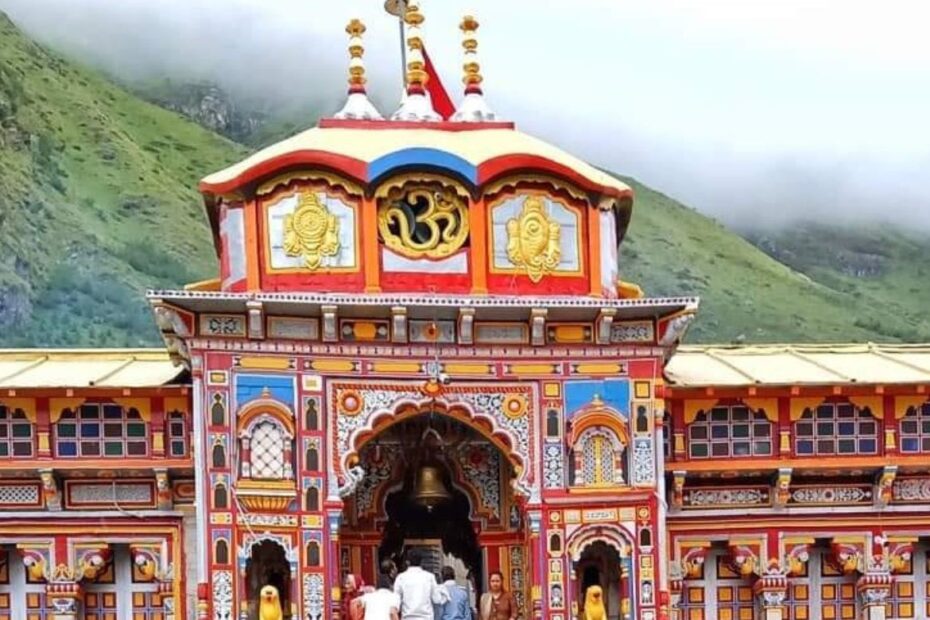About Kedarnath Dham, Uttarakhand
Kedarnath Dham, nestled in the Garhwal Himalayas of Uttarakhand, India, stands as one of the holiest and most revered pilgrimage sites for Hindus. Perched at an elevation of approximately 3,583 meters (11,755 feet), this sacred abode is dedicated to Lord Shiva. The journey to Kedarnath involves a challenging trek or a helicopter ride, both of which are rewarded by the breathtaking beauty of the surrounding peaks and the spiritual aura that envelops the region.
The ancient Kedarnath Temple, built in the 8th century, is a marvel of stone architecture, and its mystical ambiance resonates with the chants of devotees. The revered shrine, set against the backdrop of snow-capped mountains and the Mandakini River, draws pilgrims seeking divine blessings and a profound connection with the divine in this ethereal Himalayan sanctuary.
About Badrinath Dham, Uttarakhand
Nestled in the Garhwal Himalayas of Uttarakhand, India, Badrinath Dham stands as a revered Hindu pilgrimage site dedicated to Lord Vishnu. Situated at an elevation of approximately 3,133 meters (10,279 feet), this sacred abode is not only a testament to spiritual devotion but also a haven of natural beauty. The Badrinath Temple, a remarkable structure believed to date back to the 9th century, is an architectural marvel with its vibrant colors and intricate carvings. Pilgrims embark on a journey through the challenging terrain of the Himalayas to reach Badrinath, where they seek blessings from Lord Badri, an incarnation of Lord Vishnu.
Surrounded by majestic peaks, the temple overlooks the Alaknanda River, creating a serene ambiance conducive to contemplation and religious fervor. The annual pilgrimage season, typically from May to November, sees devotees from all corners of the country converging to experience the divinity and serenity that define Badrinath Dham.
Kedarnath to Badrinath Distance
The journey from Kedarnath to Badrinath is a spiritual odyssey that takes pilgrims through the enchanting landscapes of the Garhwal Himalayas in Uttarakhand, India. The distance between Kedarnath and Badrinath, two of the holiest pilgrimage sites for Hindus, is approximately 220 kilometers (137 miles) by road. While the straight-line distance may seem relatively short, the mountainous terrain and the lack of a direct road connecting the two destinations make the journey challenging and time-consuming.
Pilgrims typically travel by road, passing through picturesque towns and villages like Guptkashi, Rudraprayag, and Joshimath, as they traverse the winding roads of the Himalayan region. The pilgrimage is not just a physical journey but a spiritual one, allowing devotees to immerse themselves in the divine aura of both Kedarnath and Badrinath, each nestled in its own unique and awe-inspiring natural setting. The sacred journey between these two revered dhams is a testament to the devotee’s determination, resilience, and unwavering faith.
How to reach Badrinath from Krdarnath
The journey from Kedarnath to Badrinath involves traversing the picturesque but challenging terrain of the Garhwal Himalayas in Uttarakhand, India. While there isn’t a direct road connecting the two pilgrimage sites, there are several routes that pilgrims can take to reach Badrinath from Kedarnath:
- Road Travel:
- Pilgrims can travel by road from Kedarnath to Badrinath, passing through towns like Gaurikund, Rudraprayag, and Joshimath. The journey involves navigating winding mountain roads and can take around 10-12 hours, depending on weather and road conditions.
- Helicopter Services:
- Helicopter services are available for those seeking a quicker and more convenient mode of transportation. Helicopter services operate during the pilgrimage season and significantly reduce travel time. Pilgrims can catch a helicopter from Kedarnath to Phata and then transfer to another helicopter to reach Badrinath.
- Trekking:
- For the more adventurous and physically fit pilgrims, there is an option to trek from Kedarnath to Badrinath. This trek is part of the longer and more challenging “Char Dham Yatra” and involves crossing high-altitude mountain passes and dense forests. It’s essential to be well-prepared and physically fit for such a trek.
- Combination of Road and Helicopter:
- Another option is to take a combination of road and helicopter services. Pilgrims can travel by road to a point closer to Badrinath and then opt for a helicopter ride to reach the destination faster.
Pilgrims must check weather conditions, road status, and the availability of transportation services before embarking on the journey. The pilgrimage season, typically from May to November, sees an influx of devotees, and planning is advisable.
Additionally, the routes and transportation options may vary, so it’s recommended to stay informed and consult local authorities or tour operators for the most up-to-date information.

